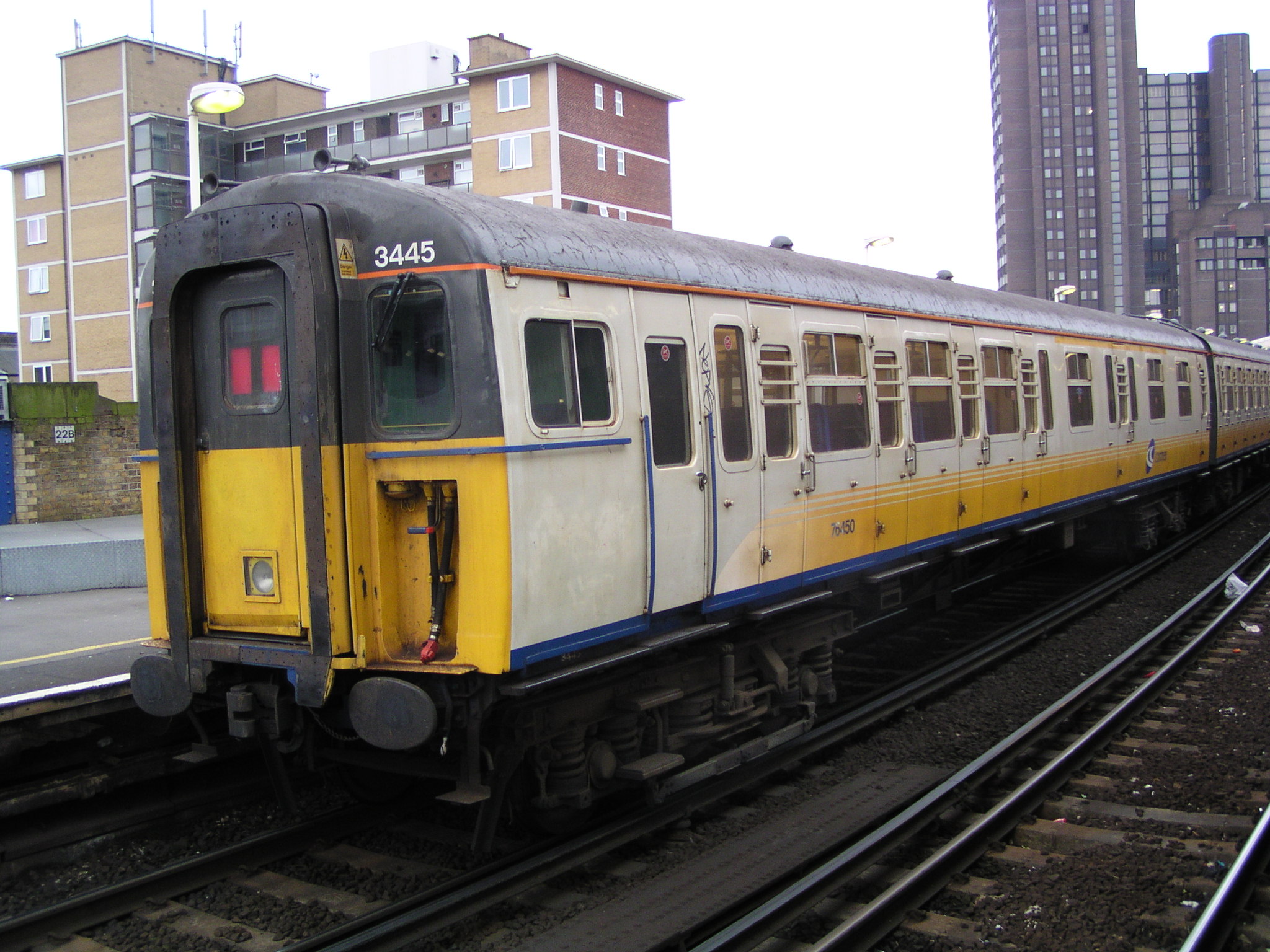- British Rail Class 423
Infobox EMU
name = British Rail Class 423
imagesize = 300px
caption = Class 423/1, no. 3445 atWaterloo East on8 February 2003 , with a service toCharing Cross . This unit is painted inConnex livery.
background = #EFF555
Manufacturer = BREL York
Operator =South West Trains Southern South Eastern
Formation = 4 car per trainset
Built = Unknown
InService = 1967-2005
Weight = Total - 36F/266S
CarLength = ?
CarWidth = 9ft 3in (2.81m)
CarHeight = 12ft 9 1/4in (3.89m)
Capacity =
MaxSpeed = 90mph (145 km/h)
Power = 1,000hp (740kW)
Gauge =
Voltage = 750V dc third railTheBritish Rail Class 423 (or 4Vep)electrical multiple unit s were built by BR atYork Works from 1967-74, although the MBSOs and TSOs of the first 20, 7701-7720, were constructed at Derby Works. They feature manually opening doors next to every seating row. They were mostly found working suburban services inSouth London , and rural services inKent andSussex up to2005 , when they were finally replaced by modernElectrostar andDesiro units.Description
tandard units
194 standard four-car units were built between 1967 and 1974, numbered 7701-7894. They were subsequently renumbered in the 1980s, into the 30xx and 31xx series, in order, to make numbers TOPS compliant. Later on, between 1988 and 1990, the units were internally facelifted. The work involved fitting fluorescent lighting and public address equipment, and also rebuilding the MBS vehicles with an additional two bays of seating in former luggage space. On refurbishment, only the first twenty units were renumbered in order, in the 34xx series. All other units were renumbered from 3421 onwards, in the order they were refurbished. All units ended up swapping motor vehicles on refurbishment - the additional work on these cars made the work take longer than that carried out on trailer vehicles.
8Vab unit
In 1968, due to a shortage of suitable stock for the
Bournemouth electrification scheme, BR formed an eight carriage 8Vab unit, no. 8001. The unit was formed of carriages from three standard sets, nos. 7739/41/42, plus a conventional locomotive-hauled buffet carriage. Three MBSOs were required within the make-up as the standard 'RB' was not through-wired for traction power distribution. In view of this, the 2 MBSOs in the 5-car portion had collector shoes fitted to one bogie on each. The unit worked on occasions with a 4-TC; this usually had a Class 33 attached to provide ETH & train lighting etc in the TC unit as the 8-VAB was not fitted with ETH jumper cables on the unit ends. Its normal running formation was with another 4-VEP to make a 12-car set. The 'RB' vehicle retained its gas-powered appliances so, unlike 4-REP buffet cars, was able to provide hot food & beverages while on diversions away from third-rail areas. One of the adjacent MBSOs had most of its doors taken out of use and tables fitted across them, for the service of meals; this vehicle also had most of its luggage racks removed. The unit was later reclassified as Class 480 following the introduction ofTOPS .The unit was disbanded in 1974, following deliveries of 4Rep stock, but at least one was not reformed, as spare vehicles from the unit had replaced crash-damaged Vep vehicles in the meantime.
4Veg units
In 1978, twelve units, nos. 7788-7799, were fitted with extra luggage racks, and reclassified as Class 427 4Veg units. The units were renumbered into the range 7901-7912. These units were dedicated to the
Gatwick Express services from London Victoria toGatwick Airport . Externally these units were marked by an orange/yellow (dayglo) coloured band at cantrail level with lettering 'London-Gatwick express service'. They normally ran only with other 4-VEG units.In 1984, they were replaced on these services by Class 73 electro-diesel locomotives operating in
push-pull with Class 488 coaching sets and Class 489 luggage vans. The twelve units were then converted back to standard set, and regained their original unit numbers.Vehicle numbering
The numbering of individual vehicles and details of when units were built are shown in the table below.
Fleet details
Original-condition units
Facelifted units
Wikimedia Foundation. 2010.
